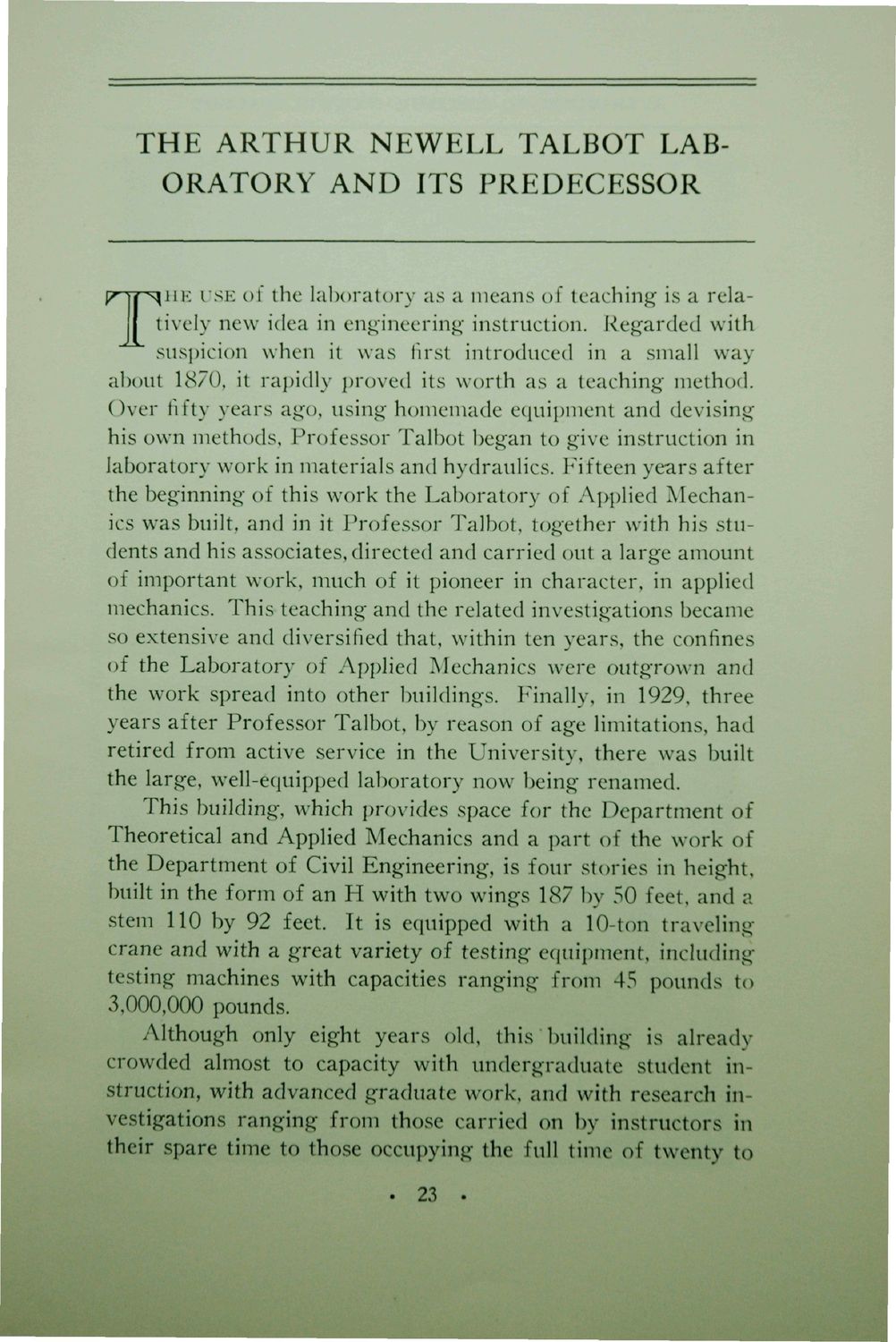| |
| |
Caption: Dedication - Talbot Lab
This is a reduced-resolution page image for fast online browsing.

EXTRACTED TEXT FROM PAGE:
THE ARTHUR NEWELL TALBOT LAB ORATORY AND ITS PREDECESSOR p^yjT^HE USE of the laboratory as a means of teaching is a relatively new idea in engineering instruction. Regarded with suspicion when it was first introduced in a small way about 1870, it rapidly proved its worth as a teaching method. Over fifty years ago, using homemade equipment and devising his own methods, Professor Talbot began to give instruction in laboratory work in materials and hydraulics. Fifteen years after the beginning of this work the Laboratory of Applied Mechanics was built, and in it Professor Talbot, together with his students and his associates, directed and carried out a large amount of important work, much of it pioneer in character, in applied mechanics. This-teaching and the related investigations became so extensive and diversified that, within ten years, the confines of the Laboratory of Applied Mechanics were outgrown and the work spread into other buildings. Finally, in 1929, three years after Professor Talbot, by reason of age limitations, had retired from active service in the University, there was built the large, well-equipped laboratory now being renamed. This building, which provides space for the Department of Theoretical and Applied Mechanics and a part of the work of the Department of Civil Engineering, is four stories in height, built in the form of an H with two wings 187 by 50 feet, and a stem 110 by 92 feet. It is equipped with a 10-ton traveling crane and with a great variety of testing equipment, including testing machines with capacities ranging from 45 pounds to 3,000,000 pounds. Although only eight years old, this' building is already crowded almost to capacity with undergraduate student instruction, with advanced graduate work, and with research investigations ranging from those carried on by instructors in their spare time to those occupying the full time of twenty to • 23 •
| |